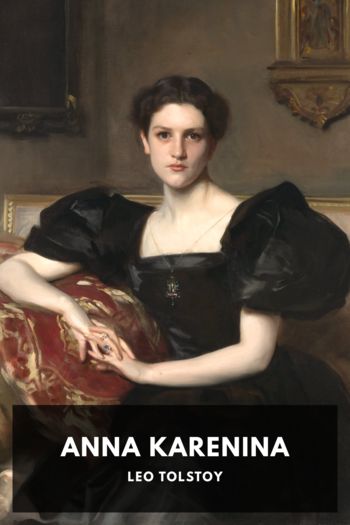What Is Art? Leo Tolstoy (good books to read for 12 year olds TXT) 📖

- Author: Leo Tolstoy
Book online «What Is Art? Leo Tolstoy (good books to read for 12 year olds TXT) 📖». Author Leo Tolstoy
In our society the difficulty of recognising real works of art is further increased by the fact that the external quality of the work in false productions is not only no worse, but often better, than in real ones; the counterfeit is often more effective than the real, and its subject more interesting. How is one to discriminate? How is one to find a production in no way distinguished in externals from hundreds of thousands of others intentionally made to imitate it precisely?
For a country peasant of unperverted taste this is as easy as it is for an animal of unspoilt scent to follow the trace he needs among a thousand others in wood or forest. The animal unerringly finds what he needs. So also the man, if only his natural qualities have not been perverted, will, without fail, select from among thousands of objects the real work of art he requires—that infecting him with the feeling experienced by the artist. But it is not so with those whose taste has been perverted by their education and life. The receptive feeling for art of these people is atrophied, and in valuing artistic productions they must be guided by discussion and study, which discussion and study completely confuse them. So that most people in our society are quite unable to distinguish a work of art from the grossest counterfeit. People sit for whole hours in concert-rooms and theatres listening to the new composers, consider it a duty to read the novels of the famous modern novelists and to look at pictures representing either something incomprehensible or just the very things they see much better in real life; and, above all, they consider it incumbent on them to be enraptured by all this, imagining it all to be art, while at the same time they will pass real works of art by, not only without attention, but even with contempt, merely because, in their circle, these works are not included in the list of works of art.
A few days ago I was returning home from a walk feeling depressed, as occurs sometimes. On nearing the house I heard the loud singing of a large choir of peasant women. They were welcoming my daughter, celebrating her return home after her marriage. In this singing, with its cries and clanging of scythes, such a definite feeling of joy, cheerfulness, and energy was expressed, that, without noticing how it infected me, I continued my way towards the house in a better mood, and reached home smiling and quite in good spirits. That same evening, a visitor, an admirable musician, famed for his execution of classical music, and particularly of Beethoven, played us Beethoven’s sonata, Opus 101. For the benefit of those who might otherwise attribute my judgment of that sonata of Beethoven to non-comprehension of it, I should mention that whatever other people understand of that sonata and of other productions of Beethoven’s later period, I, being very susceptible to music, equally understood. For a long time I used to atune myself so as to delight in those shapeless improvisations which form the subject-matter of the works of Beethoven’s later period, but I had only to consider the question of art seriously, and to compare the impression I received from Beethoven’s later works with those pleasant, clear, and strong musical impressions which are transmitted, for instance, by the melodies of Bach (his arias), Haydn, Mozart, Chopin (when his melodies are not overloaded with complications and ornamention), and of Beethoven himself in his earlier period, and above all, with the impressions produced by folk-songs—Italian, Norwegian, or Russian—by the Hungarian czardas, and other such simple, clear, and powerful music, and the obscure, almost unhealthy excitement from Beethoven’s later pieces that I had artificially evoked in myself was immediately destroyed.
On the completion of the performance (though it was noticeable that everyone had become dull) those present, in the accepted manner, warmly praised Beethoven’s profound production, and did not forget to add that formerly they had not been able to understand that last period of his, but that they now saw that he was really then at his very best. And when I ventured to compare the impression made on me by the singing of the peasant women—an impression which had been shared by all who heard it—with the effect of this sonata, the admirers of Beethoven only smiled contemptuously, not considering it necessary to reply to such strange remarks.
But, for all that, the song of the peasant women was real art, transmitting a definite and strong feeling; while the 101st sonata of Beethoven was only an unsuccessful attempt at art, containing no definite feeling and therefore not infectious.
For my work on art I have this winter read diligently, though with great effort, the celebrated novels and stories, praised by all Europe, written by Zola, Bourget, Huysmans, and Kipling. At the same time





Comments (0)